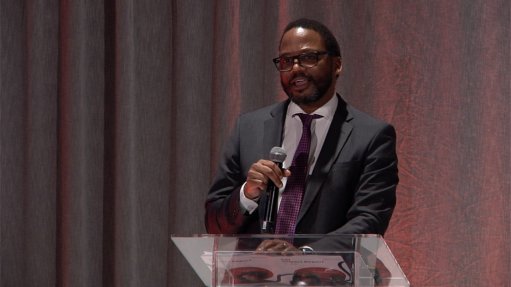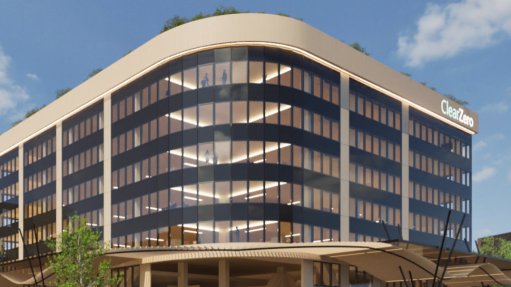Renewables a top priority for Gauteng provincial govt
One of the Gauteng Department of Economic Development’s key strategies for the next year is to “reform the energy sector through a focus on alternative energy to support the growth of a new sector along the entire value chain”.
Tabling his 2024/25 Budget Vote earlier this month, Gauteng Finance and Economic Development MEC Lebogang Maile said that the province’s growth depends on a stable and reliable energy supply.
While loadshedding has been suspended since March, it shaved 1.5 percentage points off gross domestic product in 2023, and it has become imperative to reform the province’s energy sector and embrace alternative energy sources to unlock a new era of growth and innovation.
In line with this, the department is embarking on a number of interventions to ensure energy security and promote sustainability.
This includes strengthening measures to address electricity shortages and guarantee a steady electricity supply.
Maile highlighted the Resource Efficiency Programme, which aims to facilitate a transition to resource-efficient and greener production processes.
“By supporting access to renewable- energy technologies such as solar, wind and bioenergy, we are ensuring that our businesses can continue to operate even during power outages. This initiative is about more than survival; it is about reducing energy costs over time and fostering a resilient, self- sufficient business community.”
“By identifying opportunities for significant savings on monthly energy costs and supporting the implementation of these technologies, we will enable immediate relief and long-term sustainability for our enterprises,” he continued.
Further, the Microgrid Support Programme, a specialised initiative designed to bolster medium- to large-scale renewable- energy projects, aims to add additional clean energy capacity, focusing on industrial clusters, including special economic zones and industrial parks.
“Through public-private partnerships, we will provide the technical expertise needed to bring these energy projects from conceptualisation to financial viability. We will develop a provincial commercialisation roadmap to stimulate market growth and mobilise investment.”
“Our pathfinder projects will serve as proof of concept, demonstrating that our vision for a sustainable energy future is not only possible but already under way.”
Meanwhile, the province is accelerating its Green Hydrogen Economy strategy to address Gauteng’s green energy needs and create partnership-based ecosystems, particularly for industries within the Gauteng City Region.
These sectors require reliable, clean-energy options to transform their value chains, preserve international competitiveness and mitigate carbon border adjustment tariffs.
He also highlighted that, after lengthy negotiations, government and private partners reached an agreement on the funding, implementation and maintenance of its Phase 1 roof-top solar photovoltaic project, one of the major initiatives of the provincial government’s integrated green energy strategy.
This project entails private funding, implementing and maintaining of rooftop solar panels to produce 8 MW for 11 provincial health institutions.
The facilities are Edenvale Hospital, Heidelberg Hospital, Tshwane District Hospital, Dr Yusuf Dadoo Hospital, Carltonville Hospital, Tembisa Hospital, Laudium Hospital, Mamelodi Hospital, Steve Biko Hospital, George Mukhari Hospital and Charlotte Maxeke Hospital.
According to Maile, the parties are currently finalising the contractual documentation for submission to the National Treasury to obtain TA3 approval, in line with the TR16 Public Private Partnership Regulations.
Additionally, in line with the provincial government’s commitment to support the revival and reinvention of the economies of the Southern and Western Corridors, the signing of agreements to develop 1 500 ha of land in the Merafong local municipality has started with two independent power producers.
This will result in the production of 800 MW of electricity into the grid.
Comments
Press Office
Announcements
What's On
Subscribe to improve your user experience...
Option 1 (equivalent of R125 a month):
Receive a weekly copy of Creamer Media's Engineering News & Mining Weekly magazine
(print copy for those in South Africa and e-magazine for those outside of South Africa)
Receive daily email newsletters
Access to full search results
Access archive of magazine back copies
Access to Projects in Progress
Access to ONE Research Report of your choice in PDF format
Option 2 (equivalent of R375 a month):
All benefits from Option 1
PLUS
Access to Creamer Media's Research Channel Africa for ALL Research Reports, in PDF format, on various industrial and mining sectors
including Electricity; Water; Energy Transition; Hydrogen; Roads, Rail and Ports; Coal; Gold; Platinum; Battery Metals; etc.
Already a subscriber?
Forgotten your password?
Receive weekly copy of Creamer Media's Engineering News & Mining Weekly magazine (print copy for those in South Africa and e-magazine for those outside of South Africa)
➕
Recieve daily email newsletters
➕
Access to full search results
➕
Access archive of magazine back copies
➕
Access to Projects in Progress
➕
Access to ONE Research Report of your choice in PDF format
RESEARCH CHANNEL AFRICA
R4500 (equivalent of R375 a month)
SUBSCRIBEAll benefits from Option 1
➕
Access to Creamer Media's Research Channel Africa for ALL Research Reports on various industrial and mining sectors, in PDF format, including on:
Electricity
➕
Water
➕
Energy Transition
➕
Hydrogen
➕
Roads, Rail and Ports
➕
Coal
➕
Gold
➕
Platinum
➕
Battery Metals
➕
etc.
Receive all benefits from Option 1 or Option 2 delivered to numerous people at your company
➕
Multiple User names and Passwords for simultaneous log-ins
➕
Intranet integration access to all in your organisation

















